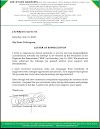The diagnostic process is the sequence of steps that trained healthcare professionals, notably physicians, surgeons, and nurses take in order to arrive at a specific diagnosis or a list of most likely diagnoses for a patient.
Generally, the steps involved and their contributions, in percentages, are:
● History [Symtom(s), complaint(s)/complain(s)] = 75%
● Physical Examination [Signs found by clinician] = 20%
● Investigation(s) [Diagnostic tests] = 5%
History is so important that without a good history and no signs found on physical examination, it becomes quite difficult to know exactly what tests to recommend to aid diagnosis in terms of confirming one or ruling out others that share similar signs and symptoms.
Fortunately or unfortunately, a good history depends on both the capabilities of the doctor and the cooperation of the patient: inconsistencies from any of the persons involved can seriously impair correct diagnosis, leading to unnecessary delays and waste of resources on unnecessary tests and investigations.
"Dear readers, please know that physicians arrive at the list of possible diagnoses based on how clear your complaints were presented and what was noticed following physical examination and then choose the appropriate tests that can help them confirm the most likely diagnosis, when necessary. This means that tests are not always necessary for diagnosis, but history and physical examination are."
Author:
Dr. YeibakeWeriwoyingipre Silver







0 Comments